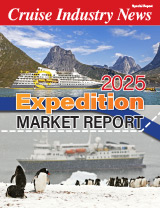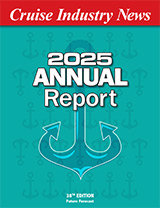Lloyd’s Register has released its third guide to Ballast Water Treatment Technology. First launched in 2007, this latest version of the guide provides further independent and impartial information on commercially available and developing technologies for ballast water treatment.
The global requirement for ballast water treatment arises from the International Convention for The Control of Ships’ Ballast Water and Sediments. This requires certain ship types to use treatment systems which make the treatment of ballast water one of the most significant environmental and operational challenges facing the marine industry today.
According to Dr Gillian Reynolds, Principal Environment and Sustainability Advisor at Lloyd’s Register, to meet this legislation, ship operators are now being confronted with having to select the ballast water treatment solution which will work for them.
Dr Reynolds, who is responsible for developing the guide, said: “The intention of the guide is to help ship yards, owners, operators, regulators and other stakeholders understand the availability and approval status of commercial solutions and provide an insight into the different technologies involved.
“This revision provides updated information on suppliers and the solutions that they provide, and demonstrates the increasing commercial availability of approved ballast water treatment systems.”
Background
Ballast water contains a variety of organisms including bacteria and viruses and the adult and larval stages of the many marine and coastal plants and animals. While the vast majority of such organisms will not survive to the point when the ballast is discharged, some may survive and thrive in their new environment. These ‘non-native species’, if they become established, can have a serious ecological, economic and public health impact on the receiving environment.
To meet this challenge, the International Maritime Organization (IMO) has developed international legislation, the International Convention for the Control and Management of Ships’ Ballast Water and Sediments, to regulate discharges of ballast water and reduce the risk of introducing non-native species from ships’ ballast water.
The requirement for ballast water treatment has arisen from the requirements of regulation D-2 of the Convention. In response to this, a number of technologies have been developed and commercialized by different vendors. Many have their basis in land-based applications for municipal and industrial water and effluent treatment, and have been adapted to meet the requirements of the Ballast Water Management Convention and shipboard operation. These systems must be tested and approved in accordance with the relevant IMO Guidelines.
Section 2 of the guide gives a summary both of the governing regulation that ultimately makes ballast water treatment mandatory, and Section 3 summarizes water treatment technology as it relates to ballast water management.
These sections provide the background knowledge and context for Section 4 – an assessment of the commercial technologies either currently commercially available or projected to be market-ready by 2010/2011 with reference to their technical and economic viability and testing and approval status.



